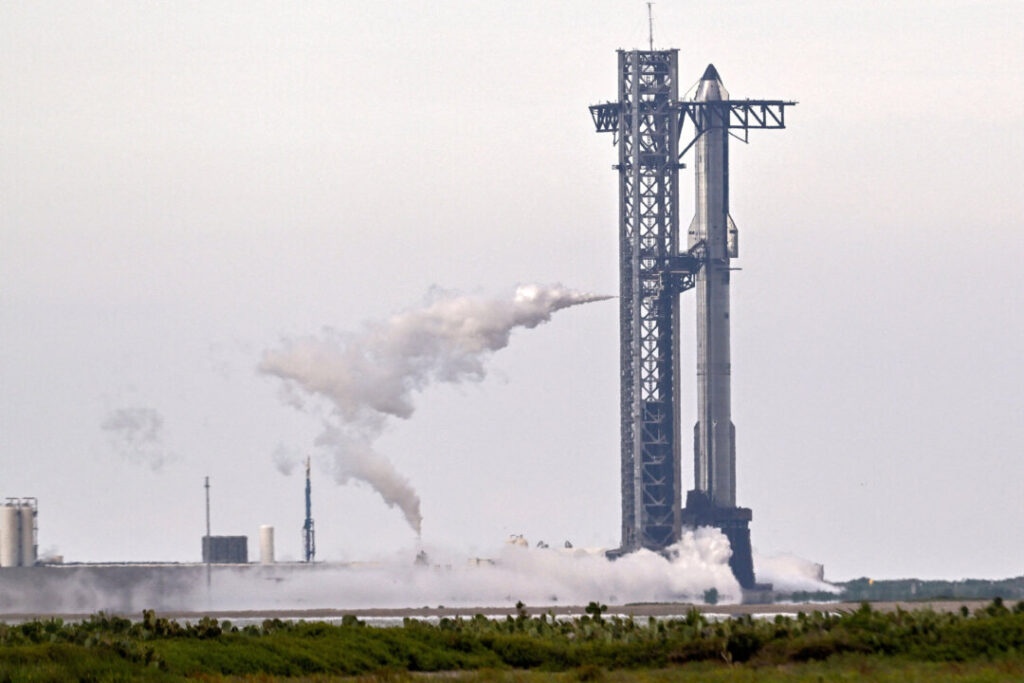
A SpaceX Super Heavy booster carrying the Starship spacecraft vents before the launch is scrubbed to allow for troubleshooting of a ground issue at the company's launch complex in Starbase, Texas, U.S., August 24, 2025. REUTERS/Steve Nesius/File Photo
SpaceX has postponed the launch of its Starship megarocket in Texas due to unfavorable weather conditions, marking the second delay in just two days. The original attempt was set for Sunday but was halted due to a ground-system leak. On Monday, SpaceX confirmed the launch would not proceed, citing “anvil clouds over the launch site,” which significantly increase the risk of lightning.
In an update shared via social media, SpaceX stated, “Standing down from today’s flight test attempt due to weather. The Starship team is determining the next best available opportunity to fly.” This announcement came shortly before the rocket, filled with millions of pounds of propellant, was scheduled to take off.
Impact of Weather on Launch Schedule
The decision to delay the launch underscores the challenges that SpaceX faces when coordinating such complex operations. Adverse weather conditions can pose significant risks, particularly when dealing with large quantities of volatile propellant. The presence of anvil clouds, which are associated with thunderstorms, raises concerns about potential lightning strikes during launch.
Elon Musk, CEO of SpaceX, confirmed the postponement on X, emphasizing the impact of the weather on operational safety. While the team had prepared extensively for the launch, the forecasted conditions prompted a shift in strategy. Instead of proceeding with the launch, SpaceX opted to turn the day’s activities into a launch rehearsal.
Looking Ahead
As SpaceX evaluates the situation, the team is actively looking for the next available opportunity to conduct the flight test. The Starship program is critical to SpaceX’s long-term goals, including missions to the Moon and Mars. Each launch attempt represents a significant step forward in developing this ambitious spacecraft.
The recent delays come as the aerospace industry continues to grapple with the unpredictability of weather patterns and their effects on launch windows. SpaceX remains committed to ensuring the safety and success of its operations, even if it means postponing launches due to environmental factors.
As the team prepares for future attempts, the focus will remain on achieving a successful launch while prioritizing safety protocols. The commitment to rigorous testing and evaluation underscores SpaceX’s position as a leader in the space exploration sector.






